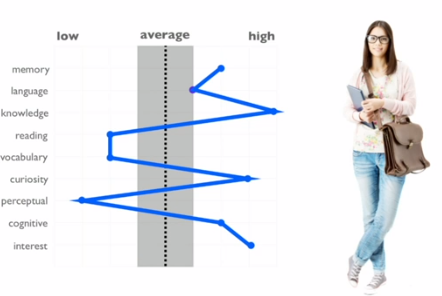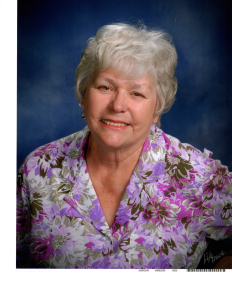The hardest part of learning something new is not embracing new ideas, but letting go of old ones.
~ Todd Rose
When we begin to tinker with classroom assessment practices, there are many changes we can consider. Maybe add an exit interview? Or maybe increase the formative assessment opportunities (using quizzes as feedback instead of as a mark to collect)? Or maybe create a re-do policy? Whatever you choose, it might be easy to change or add a single practice. However, it might be trickier to shift from a culture focused on points to one focused on learning. Enter standard based grading (or outcome based assessment)! And if you are looking for some #SBG articles to get started, scroll way down!
Some reasons you might consider #SBG as you continue to tinker with assessment:
1. Shifts the focus from points to learning:
Previously, my conversations with students revolved around how many points they did or did not get. With the conversation was an implicit power struggle: I had points to give and they wanted them. When learning standards entered our conversations, the focus shifted from points to what students did or didn’t understand. Our conversations began to explore what activities or experiences might grow their understanding or competency. We were now talking learning, not points!
2. Represents learning as a process instead of as a product or task:
When points were used, students saw learning as a single test, assignment, or answer. I did the test, got those points, and the learning is done. Moving on!
When learning was explicitly connected to learning standards and tracked over the course of several activities, students began to consider learning as something that developed over time and through various experiences. Suddenly, there was value in point-free activities because the activities helped with learning. The new meter stick for whether an activity was valuable of not, was no longer the points assigned, but how the activity helped with the learning. Magic!
3. Conveys a growth mindset:
When learners have only one shot to show what they know, we convey the belief that ability is fixed. When students have the opportunity to see their learning change over time, they begin to recognize that their learning is impacted by their efforts, and that their ability is not fixed. Mindset shift!
4. Redefines assessment as an ongoing conversation instead of as an algorithm:
Almost every course outline I created had the break down: homework 10%, labs 30%, tests 60% (or something similar to it). It was a formula which represented how the final mark would be calculated. I entered marks into these bins and then pressed calculate. I was free and clear, the computer did the work.
When I started with #SBG I had to talk to students, a lot. I had to talk to them all the time. I had to find out from them, what was going for them. I didn’t have numbers to hide behind or algorithms to prove the accuracy of the mark. Instead, we knew, by way of conversation, observation, and assessment, where learners where at in their learning journey.
5. Makes opportunities for differentiation obvious:
When all the standards are in play all the time, learners can pick and choose which standards they are developing and exploring. This might sound chaotic, but no one is more aware of what they can and cannot do, than learners themselves. When students realize they can tackle a concept again, and one that they previously were challenged by, they are motivated to try again. It might not be the exact the moment that seems convenient to us, but if we believe that learning takes time, learners learn at different rates, and all students are capable of learning, #SBG allows us to put these beliefs into action. Amazing!!
6. Improves the specificity and detail of feedback:
Nothing says general and nonspecific quite as quickly as comments such as, very good, keep it up, or try harder. When standards are used to describe the learning instead of a number, feedback is unique and specific to each student, and unique to each situation. Conversations can now clearly communicate how each student is experiencing success and where they are challenged. Conversations can move away from justifying a number.
7. Provides authentic self-assessment opportunities:
With #SBG students can track their own learning journey. Gone are awkward statements such as, the computer calculated the mark and I don’t know why you got 64%! (I am ashamed but I actually did say that). Instead, I talked with students to find out what was going on for them, from them. No one can tell you more about how a student is doing, than the student themselves. Although it may be at first unfamiliar to them, students are capable of accurately and honestly talking about their areas of strength and weakness. When learning is not about point collection and power, students open up about where they hope to improve and where they need support.
8. Shifts the ownership of learning to students:
There is nothing as demoralizing as when learners ask repeatedly, what’s my mark? It is as if you are the one who is magically granting them the mark and it has nothing to do with their learning. When students are given the standards and they begin tracking their learning, it is now a question they can answer for themselves. Presto!
9. Makes the big ideas obvious to all:
When I started teaching, I had columns and columns of marks. I thought that if I collected enough marks, the average at the end would be accurate! But how many times did I find myself in the middle of marking something, thinking that the questions were trivial or in fact unrelated to the big ideas of the course. Many times!!
Once I worked through the curriculum and pre-determined the learning standards, projects and activities that were busy work became blatantly obvious. Now we could focus on what really mattered!
10. Communicates that learners are multidimensional in their abilities:
In Todd Rose’s phenomenal book, The End of Average, he talks about the jaggedness principle. He says: “Human beings don’t line up perfectly There is no average learner. They have strengths and weaknesses. Even geniuses do.”

When we talk about learning in relation to learning standards, we can represent the individual learner and their unique jaggedness.
How are you shifting the culture of learning in your classroom or school?
Resources Round Up
- Twitter hashtags: #sbg, #sbgchat, #sblchat
- All Things Standard Based an extensive collection of SBG resources by Matt Townsley
- Top 10 Standard Based grading books
- Standards-Based Grading FAQ by Shawn Cornally





